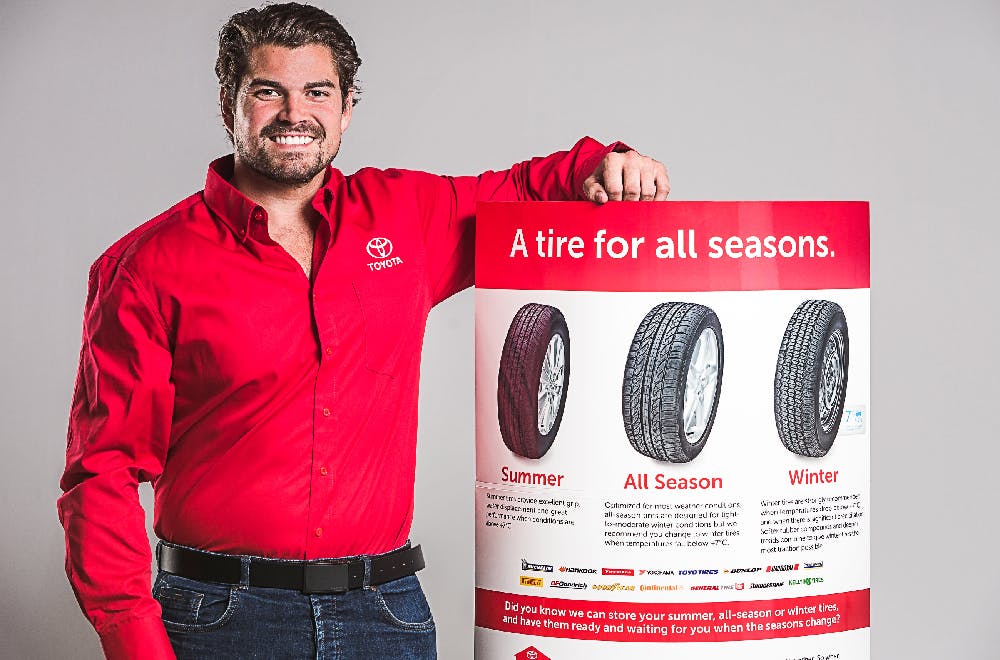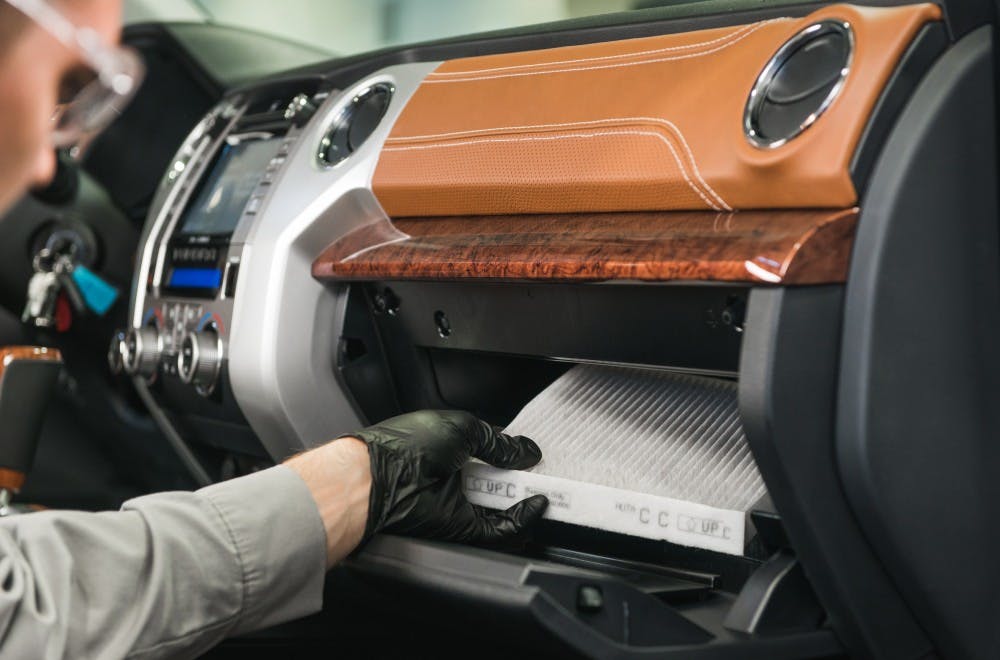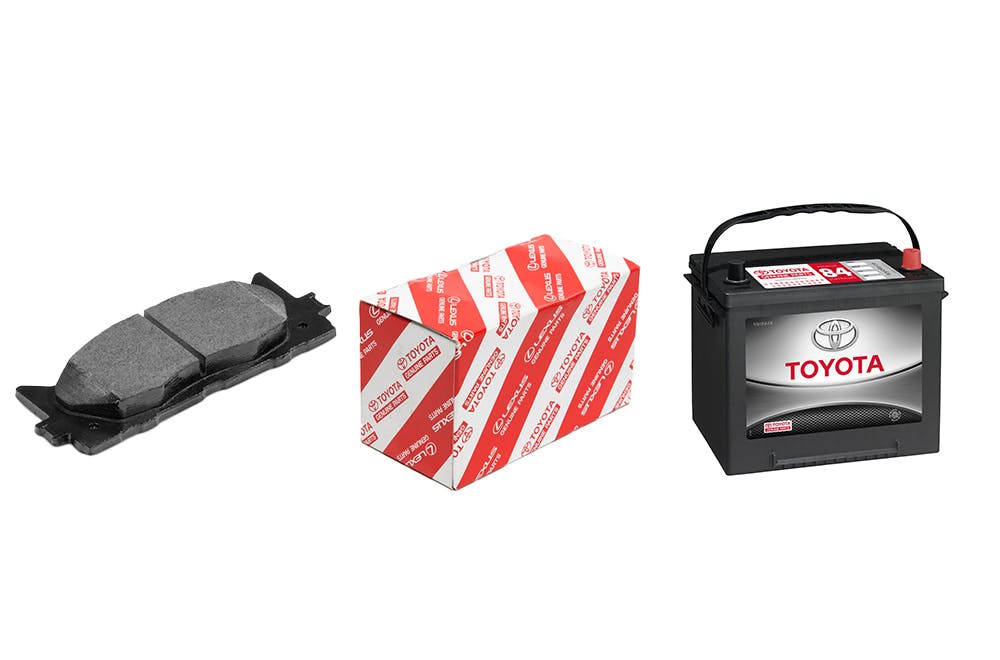
Make Sure Your Vehicle is Ready for Winter
No matter where you are in Canada, winter makes driving more challenging so we should all take steps to be prepared. From winter tires to winter wiper blades, there are several things you should be considering to make sure your vehicle is safe and ready to take on winter. Here are a few tips: __Winter Tires__ Don't compromise your safety by thinking you can get away with all seasons this winter or by only putting winter tires on two wheels. All four wheels need winter tires regardless of whether you have front-wheel, rear-wheel, all-wheel, or four-wheel-drive. In spite of the name, "all-season" tires are not winter tires, and will not provide you with traction when you need it most. Just consider the province of Quebec. When they made winter tires mandatory, the number of collisions dropped by almost 20%. __Battery__ If your car, truck or SUV is over three years old, it may not need a new battery, but getting it tested is quick, harmless, and often free at most service facilities (it's free at Toyota Service Centres). Think about it. Would you rather find out you need a new battery when your vehicle is in for service at 9am on a Tuesday, or, say at 10pm after playing hockey on a Sunday night in an almost empty parking when it’s -30 ºC? __Fluids__ Your engine coolant should be checked for strength and top up every fall. Most of us don't have a coolant strength tester, so this is best left up to your service provider. Washer fluid is an easy DIY check, and you should keep a spare jug in your vehicle all year long, especially in the winter when your windows get the dirtiest. Engine oil can take a beating during the winter thanks to fuel contamination from cold starts and water contamination from engine block condensation (if you have one), so start off the season right with a fresh oil and filter change. Also a good idea to check brake, transmission and power steering fluid levels as well. __Wipers__ Windshield wipers, no matter what brand and how much you pay for them, will eventually wear out and will need to be replaced within 18 to 24 months. Wiper blades can freeze up and get streaky under extreme conditions, so consider winter wiper blades that are specially formulated to deal with tough winter conditions. Spraying a light lubricant at the base of the wiper arm where the pivot is located also helps. __Floor Mats__ You should never stack floor mats on top of one another or use a mat that’s too thick because it could lead to accidentally jamming your accelerator pedal to the floor with catastrophic results. Consider winter floor mats to help reduce salt stains on your carpeting and floor liners, and to catch all that snow melt you drag in with you over the season. We suggest you remove your mats occasionally throughout the winter to dry them out indoors though as moisture on floor mats is a primary cause of frost on the inside of your windshield and door glass. __What's In Your Trunk?__ If you drive mostly in the city you may not need a full-blown survival kit in the trunk, but everyone should have a container of washer fluid, a light-weight snow shovel, lined work gloves, a quality ice-scraper/snow brush, a flashlight, emergency reflectors, a first-aid kit, and some folding traction mats. If you drive an older vehicle you may want to step it up with a set of booster cables as well. And always make sure these items are properly secured. Minivans, crossovers and SUVs usually don’t have a cargo area separated from the passengers, so all these items could become lethal projectiles in the event of a collision or roll-over if they’re not properly secured. __Traction__ Many of us have been told that extra weight in the back gives us better traction, but leave the idea of bags of sand or kitty litter at the curb. If you think a loose snow brush hurts when it cracks you in the back of the head during a collision, think about the damage a 50 pound bag of sand could do. The best weight to carry to improve your traction is fuel in your tank. Keeping your tank full will lower your vehicle to the ground for improved stability and also reduce the effect of winter water contamination in the tank.
Read More
Get Set for Summer
Your Toyota is more than a ride, it’s part of your family. So take care of it this spring and get set for a great summer. These four services keep your Toyota spic-and-span on the inside and out, which may help improve vehicle performance and can keep your car in tip-top shape all year long. When you bring in your Toyota to swap your winter tires for your summer set (when the average temperature goes above 7°C, time to change your tires) ask your Toyota Service Advisor about these four services. __TOYOTA COMBUSTION AND EFI SYSTEM CLEANER SERVICE__ Did you know environmental conditions, driving habits or poor quality gasoline can cause build-up in your vehicle’s fuel and combustion systems? This can lead to compromised fuel economy and performance. Our Toyota Combustion and EFI System Cleaner Service is a two-step 360° fuel system cleaning process that helps clean and eliminate contaminants and deposits in the combustion chambers and on intake and exhaust valves. Performed by Toyota University-Trained Technicians, this service restores efficiency to the EFI system and improves fuel economy. We recommend this service every 80,000 km or if performance issues exist. __TOYOTA COMPLETE FUEL SYSTEM CLEANER__ Gasoline contains a lot of additives. These additives can leave behind deposits that build up inside your engine, causing it to run less efficiently. Created by the people who know your Toyota best, Toyota Genuine Complete Fuel System Cleaner removes deposits that build up inside your car’s engine. This helps eliminate engine hesitation and rough idling, restores lost power and acceleration, reduces exhaust emissions, prevents engine knocking, and keeps your fuel system clean. Not sure if this product is right for your vehicle? This genuine Toyota product can be used on all types of gasoline engines. It’s also very easy to use. Just ask your Toyota Service Advisor how to use it, or we can do it for you. It’s recommended to use Toyota Genuine Complete Fuel System Cleaner every 10,000 km or every 6 months, whichever comes first. __A/C REFRESHER SERVICE__ Breathe easy with an A/C Refresher Service performed by Toyota University Trained Technicians. The ventilation system in your Toyota is engineered to filter out the maximum amount of particulates (like dust, pollen, and pollution) while allowing an open flow of clean air into the vehicle. Over time, particulates start to build up. Adding an A/C inspection to your spring-cleaning routine will help you avoid any larger Toyota ventilation system issues down the road, plus you’ll be breathing in fresh air all year long. The A/C Refresher Service is a two-part process. The first step involves spraying our A/C Power Foam (a heavy-duty detergent coil cleaner) which foams during application. When injected through the A/C drain tube, the foam absorbs dirt and other residue. It then breaks down into a liquid and drains out of the drain tube, which removes all contaminants in one easy treatment. For the second step, we use the A/C to clean and freshen the air ducts in the system, eliminating unwanted odours. Our A/C Refresher Service will leave your Toyota with a fresh, clean, scent-free vehicle. __AUTO DETAILING: SQUEAKY CLEAN INSIDE AND OUT__ Now that your car’s internal spring cleaning has been checked off the list, it’s time get your Toyota detailed! Proper cleaning and auto detailing are key to keeping your Toyota looking its best, and getting that new-car look is easy with Toyota Touch products and Detailing services. All Toyota Touch products are made right here in Canada and are designed specifically for Toyota vehicles. Our products are constantly updated to ensure they provide maximum effectiveness for specific interior and exterior coverings, and they don’t contain any harsh chemicals or phosphates. You can find Toyota Touch products exclusively at your local Toyota dealership. And if you don’t want to detail your car yourself, some Toyota dealerships also offer three different automotive detailing options, all performed by fully trained Toyota certified detailers: Deluxe, Premium, and Ultimate. You can also select an a la cart service option, where you can pick and choose automotive detailing services at participating Toyota dealers. Get your Toyota off to a fresh start this season by adding these four services to your spring-cleaning routine. Speak to your Toyota Service Advisor to learn more about these services, or book an appointment today at a Toyota Dealership near you.
Read More
Why You Need to Change Your Vehicle’s Cabin Air Filter
A cabin air filter prevents stuff like dirt, dust, smoke, smog, pollen, mold, and exhaust from entering the cabin of your vehicle through the heating, ventilation, and air conditioning (HVAC) system. It also keeps out other debris, such as bugs, rodent droppings, and leaves. They are typically rectangular and made of paper and a mix of other fibrous materials. They also feature pleats to better catch the contaminants. When air passes through the cabin air filter, debris is trapped rather than going into the vehicle. Eventually, that debris will build up, making it necessary for the filter to be changed to continue to work efficiently. __How Often Do You Need to Change a Cabin Air Filter?__ Toyota recommends replacing your cabin air filter every 12 months or 16,000 kms, depending on the vehicle and where you drive. If you live in an area with air pollution or you regularly drive on dirt roads, you might want to replace it even sooner. Allergy sufferers or those with compromised respiratory systems might consider getting a new one after as few as 10,000 kms. __How Much Does a Cabin Air Filter Cost?__ Toyota cabin air filters start at $32.95 plus installation, but replacing it can be a do-it-yourself task if you’re up to the challenge. In most vehicles, they are located behind the glove box, beneath the dashboard, or under the hood. While it is usually easy to access, be careful not to break any of the clips or pins holding it in. __What If You Don’t Change Your Cabin Air Filter Enough?__ A cabin air filter that’s dirty or clogged won’t filter contaminants, and could cause problems for those who suffer from allergies or have breathing difficulties. A good suggestion is to replace your cabin air filter every February or March in order to prevent pollen from finding its way into your vehicle when spring allergy season arrives. __HVAC System Issues.__ A cabin air filter left too long will make your vehicle’s HVAC system work harder, which could eventually cause the motor to burn out. Dirty or clogged cabin air filters will also reduce the amount of air flowing from the vents. This affects cabin air temperature, which depends on a steady flow of air passing through the heater core, evaporator, or both components, so not changing your cabin air filter will make your HVAC system work much harder. __Poor Window Fog Clearing.__ Another problem that could arise when airflow is compromised is your windows won’t clear as quickly. The diminished air quality that comes from a cabin air filter that’s clogging up allows condensation to form on the windshield. __Foul Odors.__ Sometimes that terrible smell coming from your vents isn’t something you just drove by. It could be coming from your cabin air filter. Dirty or excessively clogged cabin air filters can produce a dusty, musty stench, especially when the HVAC system is turned on.
Read More
Why Choose Genuine Replacement Parts Over Aftermarket Parts?
No matter how well we care for and maintain our vehicles, eventually something will need replacing. Most of the time it will simply be due to normal wear and tear, but sometimes a ding or crash is responsible. Whatever the reason, if you need repairs and parts you usually have two options. You can go to your local dealership and buy genuine parts, or you can head to an independent garage or general repair facility that offers non-genuine parts, usually referred to as “aftermarket” parts. Despite the fact that aftermarket parts are sometimes cheaper, there are some very good reasons you should be considering genuine parts for your vehicle: __Quality and Performance__ The key difference between genuine and aftermarket parts is the way they are made. Genuine parts are built in the same manufacturing facilities, on the same production lines, and with the same specs and quality standards as your vehicle. Aftermarket parts are not built by your vehicle’s manufacturer, and are created as multi-purpose parts so they can fit a wide range of cars and trucks. Because of this, they may not be as efficient or perform as well as genuine parts, so you may end up replacing aftermarket parts earlier than their genuine equivalents. __Safety__ Safety is critical to all vehicle owners. We all expect our vehicle to be built to meet or exceed stringent safety standards, and we regularly care for and maintain our vehicles to help keep them safe. However, when someone decides to use aftermarket parts, they could compromise their own safety. If those parts aren’t specifically designed for your particular model, they may not work in alignment with the rest of your car quite the same in a difficult driving situation. __Warranty__ When you buy a vehicle from a dealership, a warranty will be included with the vehicle. We value our warranties because the manufacturer promises to resolve most issues with the car during the warranty period, giving us peace of mind and financial protection for our investment. However, there are risks of voiding a vehicle’s warranty by having some repairs done with aftermarket parts - if aftermarket parts are installed, the vehicle is technically no longer entirely “as purchased”. This is not a concern for all warranties, but owners should proceed with caution and make sure they understand the potential impact that aftermarket parts installation could have on their warranty.
Read More